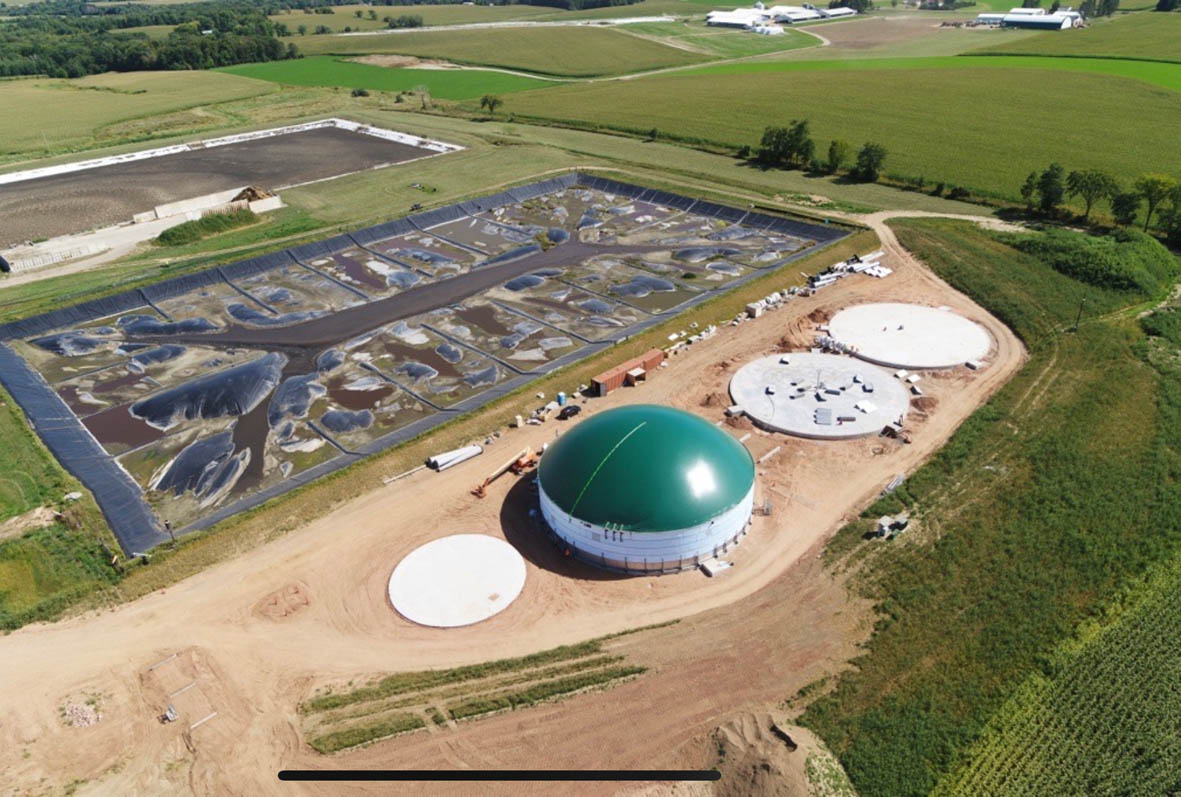
After just four months of construction, the dairy farm produces 2.36 million standard cubic meters of RNG/biomethane annually (86,600 MMBTU per year). This RNG, above gas grid specifications, is processed using advanced membrane-based gas upgrading technology to deliver 272 standard cubic meters per hour (159 SCFM), which is compressed, bottled and transported to a gas grid injection point. This strongly carbon-negative RNG is drawn off the gas grid elsewhere, significantly enhancing the sustainability of the transportation fleets of the buyers.
The farm currently has a herd of 3,400 cattle, primarily Holsteins along with a select number of Swiss cows. The owners previously operated an AD plant producing electricity for on-site use, so the concept was not new for them.
"For years, we have been utilizing cattle manure to generate biogas, meeting our farm’s electricity and heating needs while also fertilizing our fields with digestate," said the owner.
"With the new RNG facility, we have expanded our digestate utilization on a larger scale and now store it in our dedicated lagoon for optimal land application."
Weltec Biopower constructed three 6850 cubic meter (1.8m USG) duplex stainless steel digesters for the new biomethane plant near Rice Lake.
"We constructed the tanks using a ring-by-ring assembly approach, with the final step involving the installation of a gas-tight membrane storage roof," explains responsible Weltec Biopower North America COO Carsten Hesselfeld.
"With a diameter of 31.48 meters, the 8.8 meter high, insulated stainless steel tanks each have a gas storage volume of 3320 cubic meters. Our modular construction method, tried and tested worldwide over the past 20+ years, contributed significantly to the short construction time of the plant," emphasizes Hesselfeld.
Efficient Biomass Processing and Energy Output
The facility employs a streamlined process flow, with manure fed from the barns into a 1,543 cubic meter (408,000 USG) stainless steel pre-storage tank before being pumped into the digesters. The digestion system has a retention time of 34 days, before the biogas is upgraded in a membrane-based system into high-quality RNG at gas grid specifications. Digestate is pumped from the RNG plant to the existing lagoons.
Weltec Biopower designed and supplied key components for the project, including digesters, a prefabricated containerized pump-block system, heating and boiler containers and a prefabricated factory-tested control container to simplify works on site, enhance the fast construction time and ensure optimal operational efficiency.
Savings through CO2 equivalents and tax benefits
By utilizing biomethane as a fuel source, the dairy achieves substantial environmental benefits, reducing carbon emissions by approximately 11,200 tons of CO2 equivalents annually. Additionally, the plant owners capitalize on financial incentives such as RNG tax credits and fuel tax allowances. This project (particularly the strongly negative RNG, the fast construction time and the relatively low CAPEX for such a project) is a great example of the huge potential that still exists for biogas/RNG development at some of the smaller dairy farms in the USA.

